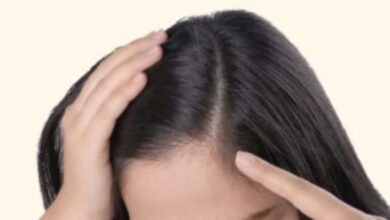You might imagine it’s easy to tell the difference between healthy teeth vs unhealthy teeth. However, it’s not just about the surface-level things like whiteness and cleanliness. There’s more to it.
In most cases, you would have to go to a dentist to tell if you have healthy or unhealthy teeth since cavities and other things like that aren’t visible to the naked eye.
In this comprehensive guide, we’ll explore the key differences between healthy and unhealthy teeth, as well as the factors that contribute to each condition.
Table of Contents
Healthy Teeth: The Characteristics:
Let’s start first with the good news. What do healthy teeth look like?
White and Clean Appearance.
Healthy, beautiful teeth exhibit a white, clean appearance, indicating the integrity of the enamel – the outermost layer of the tooth. Tooth enamel is the hardest substance in the human body and serves as a protective shield against decay.
Also, healthy teeth have a smooth surface without visible pitting, grooves, or rough patches. This smoothness prevents the accumulation of plaque and bacteria, promoting optimal oral hygiene.
Strong and Firm Structure.
Healthy teeth are firmly anchored in the jawbone, providing stability for chewing and speaking. This structural integrity is vital for overall oral function.
A healthy tooth should not exhibit any mobility or shifting. Stability in the jaw ensures proper alignment and prevents issues like misalignment or malocclusion.
Pink and Healthy Gums.
Healthy teeth are complemented by firm, pink gums. The gum tissue should fit snugly around each tooth, forming a protective seal against bacteria.
Healthy gums do not bleed during regular activities such as brushing or flossing. Bleeding gums may indicate the presence of gum disease, a common oral health concern.
No Sensitivity or Pain.
Healthy teeth typically do not exhibit sensitivity to hot or cold temperatures, sweet or acidic foods, or pressure. Sensitivity may indicate enamel erosion or dental issues.
In the absence of dental problems, healthy teeth should not cause pain. Discomfort or pain may signal issues like cavities, infection, or tooth decay.
Fresh Breath.
Healthy teeth contribute to fresh breath. Regular brushing, flossing, and dental check-ups help prevent the buildup of bacteria that can lead to bad breath.
Unhealthy Teeth: The Signs and Symptoms:
On the opposite end, stands unhealthy teeth. Do you know what they look like?
Discoloration and Stains.
Unhealthy teeth may exhibit discoloration, with shades ranging from yellow to brown. Stains can be caused by factors such as poor oral hygiene, smoking, or consumption of staining foods and beverages.
Dark spots or patches on the teeth may indicate the presence of decay or dental caries. These areas may appear as brown or black spots on the tooth surface.
Weakened Structure and Decay.
Visible Cavities: Unhealthy teeth often show visible signs of decay in the form of cavities. Cavities appear as small holes or pits on the tooth surface and can lead to further deterioration if left untreated.
The enamel of unhealthy teeth may become soft or pitted, compromising its protective function. This can result from acidic erosion or bacterial activity.
Gum Issues.
Unhealthy teeth are often accompanied by redness and swelling of the gums. Inflammation may be a sign of gingivitis or periodontal disease.
Gums that bleed during brushing or flossing suggest underlying gum disease. This can lead to more severe issues if not addressed promptly.
Tooth Sensitivity and Pain.
Unhealthy teeth may become more sensitive to temperature changes, sweet or acidic foods, and pressure. This heightened sensitivity can be indicative of enamel erosion or exposed nerves.
Toothaches or persistent pain are common signs of dental issues such as infections, abscesses, or advanced decay. Seeking prompt dental care is crucial to address the underlying problem.
Loose or Shifting Teeth.
Unhealthy teeth may exhibit mobility or shifting, indicating weakened support structures. This can result from advanced gum disease or the loss of bone density.
Tooth misalignment or changes in the bite may occur as a consequence of untreated dental issues. It can impact both oral function and aesthetics.
How To Get a Better Smile:
What can you do to ensure your teeth stay healthy, happy, and wise? Well, there are some lifelong habits you need to develop. It’s not going to be easy, but it will be well worth it.
Effective Oral Hygiene Practices.
Brushing teeth at least twice a day with fluoride toothpaste helps remove plaque and bacteria, maintaining the health of teeth and gums.
Regular flossing helps clean between teeth and along the gumline, preventing the buildup of plaque and reducing the risk of gum disease.
Balanced Diet.
A balanced diet rich in essential nutrients, particularly calcium and vitamin D, contributes to the strength and health of teeth.
Minimizing the consumption of sugary foods and beverages helps prevent the formation of plaque and reduces the risk of cavities.
Regular Dental Check-ups.
Regular dental check-ups and professional cleanings help detect and address issues early, promoting overall oral health. Visit your dentist at least once every six months or annually. They can provide services like teeth whitening, dental cleaning, and more.
Prompt treatment of dental issues, such as cavities or gum disease, prevents further deterioration and maintains the integrity of teeth.
Healthy Lifestyle Choices.
Quitting or avoiding tobacco products is crucial for oral health, as smoking can contribute to staining, gum disease, and other dental issues.
Excessive alcohol consumption can contribute to dehydration and a dry mouth, increasing the risk of cavities. If you can’t quit alcohol consumption, then moderation is key.
Healthy Teeth vs Unhealthy Teeth – Which One Do You Have?
Of course, you would like to keep your teeth healthy for as long as you desire. But sometimes we get lazy or complacent or are just plain ignorant about these things.
Now that you know the difference between healthy teeth vs unhealthy teeth, you can follow some effective oral health habits to keep your teeth pristine for longer. The more you work at it, the better your teeth will be.
Don’t forget to check out related articles on our website about dental hygiene and caring for teeth.





